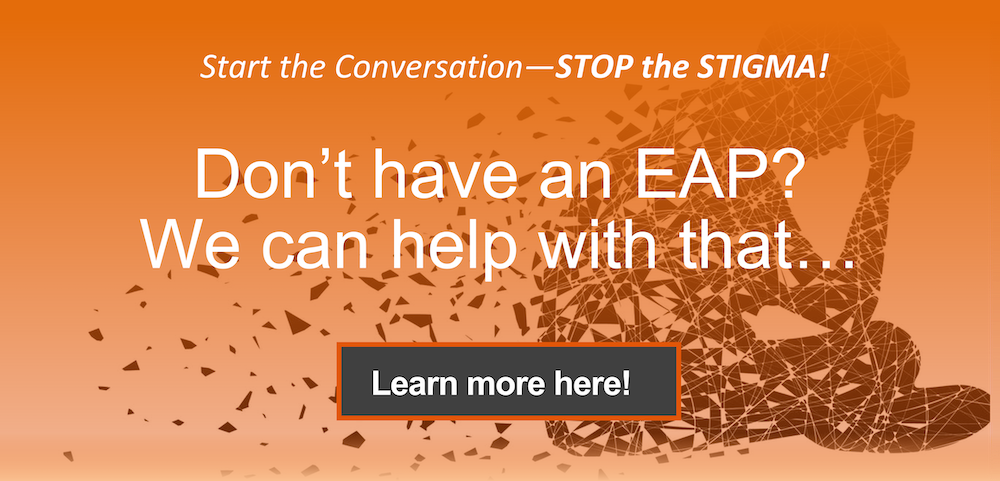Stress at work affects more than just individual well-being — it can quietly erode team morale, productivity, and retention.
According to a 2023 survey by the American Psychological Association, 77% of workers reported experiencing work-related stress in the past month. This high prevalence underscores the need for organizations to address stress management proactively.
HR professionals are uniquely positioned to help. Employee Assistance Programs (EAPs), internal communication channels, and managerial support structures are tools already available within most organizations. When leveraged strategically, these resources can create a supportive environment that reduces stress and strengthens workplace culture.
The Negative Impacts of Stress
Chronic stress doesn’t just affect individual employees; it can quietly weaken the entire organization. Research from the American Psychological Association and other sources points to several well-documented consequences:
- Lower productivity - Stress can impair concentration, decision-making, and overall efficiency.
- Higher absenteeism - Stressed employees are more likely to take sick days or personal time.
- Burnout and disengagement - Sustained stress leads to emotional exhaustion and reduced motivation.
- Increased turnover - High-stress environments often push employees to seek work elsewhere.
- Greater healthcare costs - Stress-related health issues can drive up insurance claims and benefit usage.
These ripple effects make it clear that stress isn’t just a personal issue, it’s an organizational one. That’s why HR’s response must go beyond surface-level wellness programs and tap into the tools already within reach.
Rethinking Stress Reduction as a Strategic HR Initiative
Stress management isn’t a standalone wellness perk. It’s a core business issue that affects everything from retention to productivity. When HR leaders begin to view stress reduction as a strategic priority, they can start using tools that already exist inside the organization in more intentional and effective ways.
7 Strategic Ways to Reduce Stress
1. make your eap more than a check box
Many companies offer an Employee Assistance Program, but that doesn’t mean employees are using it or even know it exists. HR’s opportunity isn’t just to provide an EAP, but to turn it into a visible, trusted tool for managing stress.
It’s surprisingly common for employees to be unaware that an EAP is available. Even when it’s mentioned during onboarding, that information can get buried under a pile of other policies and procedures. Regular reminders help normalize the idea that support is available and that it’s okay to use it.
Internal communication channels are key. Rotating EAP reminders into Slack posts, newsletters, all-hands meetings, or even posters in shared spaces can bring the program back to the surface. The more visible and consistent the messaging, the more likely employees are to see the EAP as a resource rather than a formality.
2. clarify access: embedded vs. opt-in
Not all EAPs are created equal. Some are embedded into employee benefits and available automatically, while others require employees to enroll or take specific steps to access support. That distinction can significantly impact how often these programs are used.
According to the Society for Human Resource Management, employees are more likely to engage with EAP services when they’re embedded into the benefits package rather than offered on an opt-in basis. Confusion about eligibility or access — even something as simple as not knowing where to go — can be enough to discourage use.
To make your EAP more effective, ask:
- Is it embedded in your health benefits, or do employees need to take extra steps to access it?
- Do they know what it offers and how to get started?
- Have you clearly communicated that it’s free and confidential?
Removing friction increases the chances that employees will reach out when they need help.
3. make the eap easy to find
Even when employees are aware of the EAP, they may not know where to find it in the moment they need it. A crisis doesn’t always leave room for searching through onboarding packets or outdated intranet pages.
Placement matters. HR teams can increase visibility by providing EAP contact information:
- Part of every new hire packet
- Accessible on the company intranet or benefits portal
- Included in email signatures for HR staff
- Posted in break rooms or wellness areas
Some companies even add EAP phone numbers to the back of employee ID badges or security cards. These small decisions remove barriers and send a clear message: getting help should be simple.
4. partner with managers to support their teams
Managers are often the first to notice when an employee is showing signs of stress, but they may not feel prepared to address it. HR can play a vital role by equipping managers with the tools and confidence to offer meaningful support without feeling like they need to be counselors.
This support starts with clarity. Managers need to know what to look for and how to respond in a way that’s both compassionate and appropriate. A brief reference guide outlining signs of burnout or emotional distress can go a long way. So can giving managers simple, practical language they can use to check in with employees — especially when someone seems withdrawn, irritable, or overwhelmed.
Just as important is making sure managers understand when and how to connect someone with additional resources like the EAP. A clear, low-pressure process helps managers feel like partners in promoting well-being rather than gatekeepers or enforcers. Regular communication between HR and department leads can reinforce this partnership, creating a feedback loop where emerging issues are raised early and addressed with care.
5. use communication channels with intention
Internal communication plays a major role in shaping how employees perceive their work environment. When used intentionally, it can become a proactive tool for reducing stress across the organization, not just a way to deliver updates.
Consistent messaging helps create a culture where transparency, psychological safety, and well-being are part of everyday conversations. HR teams can use existing platforms like newsletters, intranet pages, onboarding materials, and team meetings to reinforce values, acknowledge challenges, and promote a sense of connection.
This might include brief check-in prompts for managers to use with their teams, reminders about using PTO, or guidance around setting boundaries when working remotely. It can also mean spotlighting employee success stories, sharing leadership reflections on workplace culture, or offering short tips on managing workload during busy seasons.
Communication doesn’t always need to be formal or top-down. What matters is that employees feel seen, informed, and supported — especially during periods of change, high demand, or uncertainty. When HR uses communication to build trust and normalize conversations around stress, it creates a foundation for long-term resilience.
6. Reintroduce flexibility as a stress-reduction strategy
Flexible scheduling isn’t a new concept, but many organizations overlook its value as a tool for reducing stress. When used thoughtfully, options like remote work, staggered hours, compressed workweeks, and mental health days can make a meaningful difference in how employees manage their workload and personal responsibilities.
According to a 2023 survey by McKinsey & Company, 87% of employees offered at least some flexibility take advantage of it, and a majority say it positively affects their mental health. Yet, flexibility only works when employees feel they can use it without judgment. If managers discourage flexible scheduling through tone or behavior — or if employees worry that using it will affect performance reviews — then the tool loses its power.
To ensure that flexibility supports well-being, HR teams can:
- Regularly review whether flexible policies are being used as intended
- Ask employees what kinds of flexibility matter most to them
- Provide managers with guidance on how to encourage appropriate use without undermining accountability
- Promote examples of leaders within the organization who model healthy boundaries
The key isn’t just offering flexibility. It’s fostering a culture where taking advantage of it is seen as responsible, not risky.
7. use the data you already have
HR departments often collect a wealth of data that can provide insights into employee well-being, yet this information is frequently underutilized. Patterns in absenteeism, paid time off (PTO) usage, exit interviews, employee surveys, and benefits utilization can all serve as indicators of workplace stress. Regularly analyzing this data allows HR professionals to identify trends and address issues proactively.
For instance, a sudden increase in unused vacation days might suggest that employees feel unable to take time off due to workload pressures. Similarly, a rise in short-term disability claims could point to stress-related health concerns. Qualitative data from employee surveys can also shed light on morale and engagement levels.
HR leaders should:
- Regularly review existing data to spot early warning signs of stress.
- Communicate findings with management to develop targeted interventions
- Ensure employees are aware of available resources, such as EAPs, and encourage their use.
By leveraging existing data, organizations can create a more responsive and supportive environment that addresses employee stress before it escalates.
Reframe the Role of HR in Stress Management
HR is often expected to be the bridge between organizational goals and employee well-being, yet that role can feel overwhelming without a clear roadmap. The good news is that many of the tools needed to reduce employee stress are already part of standard HR operations. What makes the difference is how those tools are applied.
When HR reframes stress management as a proactive, strategic function, rather than a reactive one, it becomes easier to prioritize what matters most.
When you partner with Ulliance, our Life Advisor Consultants are always just a phone call away to teach ways to enhance your work/life balance and increase your happiness. The Ulliance Life Advisor Employee Assistance Program can help employees and employers come closer to a state of total well-being.
Investing in the right EAP or Wellness Program to support your employees will help them and help you. Visit https://ulliance.com/ or call 866-648-8326.
The Ulliance Employee Assistance Program can address the
following issues:
• Stress about work or job performance
• Crisis in the workplace
• Conflict resolution at work or in one’s personal life
• Marital or relationship problems
• Child or elder care concerns
• Financial worries
• Mental health problems
• Alcohol/substance abuse
• Grief
• Interpersonal conflicts
• AND MORE!
References:
7 Strategies HR Teams Can Use to Manage Workplace Stress; IceHrm
https://icehrm.com/blog/7-strategies-hr-teams-can-use-to-manage-workplace-stress
2023 Work in America Survey; American Psychological Association
https://www.apa.org/pubs/reports/work-in-america/2023-workplace-health-well-being
Americans Are Embracing Flexible Work — and They Want More of It; McKinsey & Company
https://www.mckinsey.com/industries/real-estate/our-insights/americans-are-embracing-flexible-work-and-they-want-more-of-it
Does Your EAP Make the Grade?; SHRM; Kathy Gurchiek
https://www.shrm.org/topics-tools/news/hr-quarterly/does-your-eap-make-the-grade



